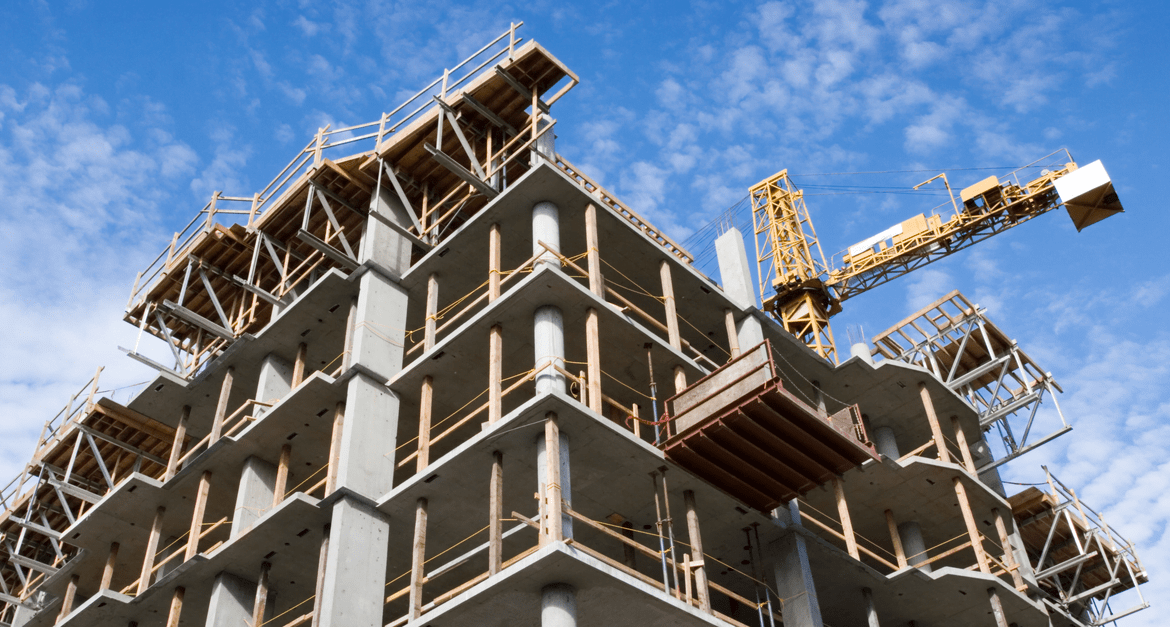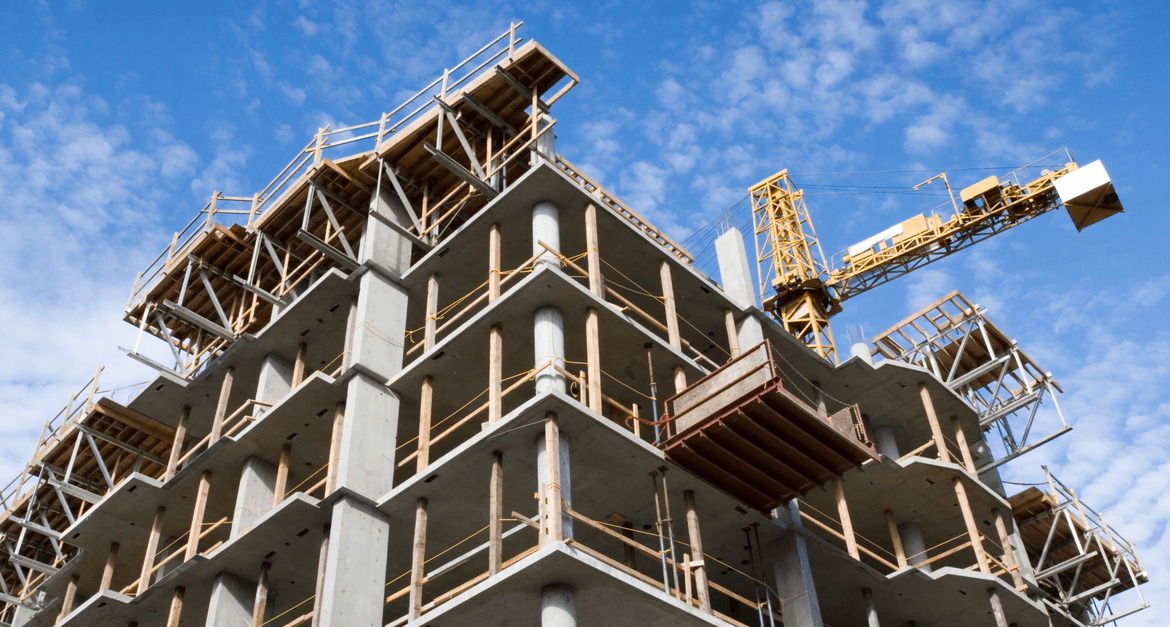
Overcoming Major Challenges in High-Rise Construction in Nigeria: A Roadmap to Safer, More Efficient Buildings
Introduction
High-Rise Construction Challenges In Nigeria;
High-rise construction in Nigeria represents a significant shift towards urbanization and modernization. Skyscrapers and multi-story buildings are transforming the skyline of cities like Lagos, Abuja, and Port Harcourt, reflecting economic growth and a burgeoning demand for space. However, the pursuit of vertical expansion brings with it a set of unique challenges that must be meticulously addressed to ensure the safety, sustainability, and success of high-rise projects. This article explores the key challenges of high-rise construction in Nigeria and offers strategies for overcoming them.
High-rise buildings have become a defining feature of Nigeria’s urban landscape. As cities such as Lagos, Abuja, and Port Harcourt continue to experience rapid population growth and urbanization, high-rise construction has emerged as a key solution to accommodating this burgeoning population. These towering structures not only serve as residential and commercial spaces but also symbolize the country’s economic and infrastructural growth. However, the transition toward vertical urban development presents a range of significant challenges that need urgent attention.
One of the most pressing issues in high-rise construction in Nigeria is safety. The construction of these monumental structures involves complex engineering processes that require rigorous standards of safety to prevent accidents and ensure the long-term stability of the buildings. Unfortunately, safety protocols are sometimes compromised, leading to catastrophic consequences. Building collapses, like the tragic incident in Lagos in 2019, are stark reminders of the importance of stringent safety regulations and oversight in high-rise construction.
A significant factor contributing to these safety concerns is the lack of qualified professionals in the construction industry. There is a shortage of experienced architects, engineers, and project managers who can handle the complexities associated with high-rise projects. This shortage, combined with inadequate training and certification programs, compromises the quality of the construction process. Furthermore, there is often insufficient supervision during the construction phase, which leads to substandard practices and the use of inferior materials.
The regulatory framework governing construction in Nigeria also remains a work in progress. While there are national building codes and safety standards in place, their enforcement is often weak, and there are instances of corruption and non-compliance. Building permits are sometimes issued without proper inspection, and construction work proceeds without adherence to the established standards. Without effective enforcement, the integrity of high-rise buildings remains questionable, leading to safety concerns that can undermine public confidence in these structures.
Beyond safety, another challenge lies in the lack of adequate infrastructure to support high-rise construction projects. High-rise buildings require specialized materials, skilled labor, and modern construction techniques that are not always readily available in Nigeria. There is often a reliance on imported materials, which increases the cost of construction and creates logistical challenges in sourcing and transporting these materials. Moreover, the transportation infrastructure in many Nigerian cities is not designed to handle the movement of large-scale construction materials, which further delays projects.
In addition to material and labor shortages, the lack of advanced construction technology poses a significant barrier. High-rise construction demands precision and cutting-edge technology, such as Building Information Modeling (BIM), to manage the complexity of these projects. However, the construction industry in Nigeria lags behind in adopting these technologies, which leads to inefficiencies and delays. This technological gap not only hinders the speed of construction but also affects the quality and durability of high-rise buildings.
Another issue that impedes the growth of high-rise construction in Nigeria is poor urban planning. While cities are growing rapidly, urban planning has not kept pace with the demand for space. Many high-rise projects are constructed in areas that are not well-planned, which can lead to problems with accessibility, traffic congestion, and the adequacy of surrounding infrastructure. Furthermore, there is a lack of coordination between various stakeholders involved in urban development, including government agencies, construction firms, and utility providers. This lack of coordination can result in delays, increased costs, and inefficient use of resources.
Environmental sustainability is another crucial consideration in high-rise construction. The environmental impact of building and maintaining these structures can be significant, from the carbon emissions associated with construction activities to the energy consumption required to power these buildings once completed. In Nigeria, where energy supply is often unreliable, providing adequate energy for high-rise buildings is a major challenge. To address this, there is a need to integrate sustainable building practices into the construction of high-rise buildings, including the use of energy-efficient technologies, renewable energy sources, and sustainable building materials.
Despite these challenges, there are numerous opportunities for innovation in the high-rise construction sector in Nigeria. By embracing modern construction techniques, investing in skilled labor, improving safety standards, and fostering collaboration between the public and private sectors, Nigeria can overcome the obstacles hindering the growth of high-rise buildings. A concerted effort to address these challenges will not only improve the quality of high-rise construction but also contribute to the overall development of the Nigerian economy.
The Rise of High-Rise Construction in Nigeria
High-rise buildings are increasingly seen as a solution to the challenges of rapid urbanization and limited land availability in Nigeria. These structures offer several benefits:
- Optimized Land Use: High-rises maximize the use of limited land, providing more floor space within a confined footprint.
- Economic Growth: They contribute to the economic development of urban areas by accommodating commercial, residential, and mixed-use spaces.
- Urban Aesthetics: Skyscrapers and high-rises enhance the skyline, contributing to the visual appeal and modern image of cities.
Key Challenges in High-Rise Construction
1. Regulatory and Compliance Issues
- Challenge: Navigating Nigeria’s complex regulatory environment can be daunting. High-rise projects must comply with a range of building codes, zoning laws, and environmental regulations, which can vary between states and local jurisdictions.
- Strategy: Engage with local authorities and legal experts early in the planning process to understand and comply with all relevant regulations. Obtain necessary permits and approvals before commencing construction, and ensure continuous compliance throughout the project lifecycle.
2. Structural and Engineering Complexities
- Challenge: High-rise buildings face unique structural challenges, including wind loads, seismic activity, and foundation requirements. Designing and constructing a building that can withstand these forces while ensuring safety and stability is a complex task.
- Strategy: Utilize advanced engineering and architectural practices to address structural challenges. Employ experienced engineers and architects who specialize in high-rise construction, and incorporate modern technologies such as Building Information Modeling (BIM) to enhance design accuracy and efficiency.
3. Environmental and Sustainability Concerns
- Challenge: High-rise buildings have significant environmental impacts, including energy consumption, carbon emissions, and resource use. Ensuring that these structures are sustainable and environmentally friendly is crucial.
- Strategy: Implement green building practices and sustainable design principles. Utilize energy-efficient systems, incorporate renewable energy sources, and prioritize sustainable materials. Conduct Environmental Impact Assessments (EIAs) to evaluate and mitigate the environmental impact of the project.
4. Construction and Project Management Issues
- Challenge: Managing the construction of high-rise buildings involves coordinating numerous contractors, suppliers, and stakeholders. Delays, cost overruns, and logistical challenges can arise, impacting project timelines and budgets.
- Strategy: Develop a comprehensive project management plan that includes detailed schedules, budgets, and risk management strategies. Employ experienced project managers and utilize project management software to monitor progress and address issues proactively.
5. Safety and Risk Management
- Challenge: The safety of construction workers and future occupants is paramount. High-rise construction involves significant risks, including falls, equipment accidents, and structural failures.
- Strategy: Implement stringent safety protocols and provide regular training for construction workers. Conduct thorough risk assessments and establish emergency response plans. Ensure that all safety standards and regulations are adhered to throughout the construction process.
6. Infrastructure and Connectivity
- Challenge: High-rise buildings require robust infrastructure, including transportation, utilities, and communication systems. Integrating these systems into the urban fabric can be challenging, particularly in areas with existing congestion and limited resources.
- Strategy: Plan for infrastructure integration early in the design process. Coordinate with local authorities and utility providers to ensure that necessary services are available and capable of supporting the high-rise building. Consider the impact of the project on existing infrastructure and develop strategies to address potential disruptions.
Best Practices for Successful High-Rise Construction
1. Early and Comprehensive Planning
- Strategic Planning: Begin with a comprehensive planning phase that includes feasibility studies, regulatory research, and stakeholder consultations. Develop a detailed project plan that outlines objectives, timelines, budgets, and risk management strategies.
- Stakeholder Engagement: Engage with stakeholders, including local communities, government authorities, and potential occupants, to gather input and address concerns. Effective communication helps build support and ensures that the project aligns with local needs and expectations.
2. Advanced Engineering and Design Techniques
- Innovative Design: Incorporate innovative design techniques and technologies to address the unique challenges of high-rise construction. Utilize BIM, advanced structural analysis, and energy modeling to enhance design accuracy and performance.
- Sustainability Integration: Prioritize sustainability by integrating green building practices and energy-efficient technologies into the design. Aim for certifications such as LEED or BREEAM to demonstrate commitment to environmental stewardship.
3. Robust Project Management and Oversight
- Project Management Tools: Utilize project management tools and software to track progress, manage resources, and communicate with stakeholders. Regularly review project performance and adjust plans as needed to stay on track.
- Quality Control: Implement rigorous quality control measures to ensure that construction meets design specifications and safety standards. Conduct regular inspections and testing to identify and address potential issues early.
4. Effective Risk Management
- Risk Assessment: Conduct thorough risk assessments to identify potential challenges and develop strategies to mitigate them. Regularly update risk management plans based on new information and project developments.
- Safety Measures: Prioritize safety by implementing robust safety protocols and providing ongoing training for construction workers. Regularly review and update safety procedures to address emerging risks.
5. Community and Environmental Considerations
- Community Engagement: Engage with local communities to address concerns and incorporate feedback into the project. Consider the impact of the high-rise building on local neighborhoods and develop strategies to mitigate any adverse effects.
- Environmental Stewardship: Implement measures to minimize the environmental impact of the project, including waste reduction, resource conservation, and pollution control. Conduct regular environmental audits to ensure compliance with regulations and sustainability goals.
Case Studies: Successful High-Rise Projects in Nigeria
Examining successful high-rise projects provides valuable insights into effective management and innovative solutions:
1. The Eko Tower Complex, Lagos
- Overview: The Eko Tower Complex is a prominent high-rise development in Lagos, featuring commercial, residential, and recreational spaces. The project showcases modern design and sustainable building practices.
- Outcome: The Eko Tower Complex has successfully navigated regulatory and construction challenges, contributing to the revitalization of Lagos’s urban landscape. The project highlights the benefits of integrating sustainability and advanced engineering techniques.
2. The Abuja Central Business District Towers
- Overview: The Abuja Central Business District Towers are a series of high-rise buildings in Nigeria’s capital city, offering office spaces, retail outlets, and residential units. The project emphasizes modern infrastructure and urban connectivity.
- Outcome: The towers have set a benchmark for high-rise development in Abuja, demonstrating effective management of infrastructure integration and project coordination. The project underscores the importance of aligning design with urban planning objectives.
Conclusion
Addressing the challenges of high-rise construction in Nigeria requires a multifaceted approach that encompasses regulatory compliance, structural engineering, sustainability, project management, and safety. By understanding and proactively managing these challenges, developers, architects, and stakeholders can successfully navigate the complexities of high-rise projects and contribute to the growth and modernization of Nigerian cities.
Investing in advanced engineering techniques, robust project management practices, and sustainable design principles will enhance the resilience and success of high-rise construction projects. As Nigeria continues to evolve and expand its urban infrastructure, effective management of high-rise projects will play a crucial role in shaping the future of its cities and ensuring their continued development and prosperity.
By addressing these challenges comprehensively and embracing innovative solutions, Nigeria can harness the potential of high-rise construction to build vibrant, sustainable, and resilient urban environments for the future.
As Nigeria continues to grow and urbanize, high-rise construction will play an increasingly important role in shaping the country’s urban development. The challenges currently faced in this sector are not insurmountable, but they require concerted efforts from all stakeholders involved in the construction process. Overcoming these challenges will not only lead to safer, more efficient, and sustainable high-rise buildings but also contribute to the country’s broader infrastructural development and economic growth.
One of the first steps in addressing these challenges is to improve the safety standards in high-rise construction. The implementation of stricter safety regulations and the enforcement of building codes are crucial to ensuring that construction projects adhere to international standards. The government must take a proactive role in monitoring construction projects and ensuring that contractors comply with these standards. Additionally, there is a need to establish more comprehensive training and certification programs for construction professionals, particularly in the areas of high-rise construction and structural engineering.
Another important solution to the challenges of high-rise construction is the adoption of modern construction technologies. The use of technologies such as Building Information Modeling (BIM) and 3D printing can greatly improve the efficiency of the construction process and ensure that projects are completed on time and within budget. These technologies also enable better management of resources and reduce the risk of errors during the construction process. Furthermore, the use of advanced construction techniques can enhance the quality of high-rise buildings and make them more resilient to natural disasters such as earthquakes and floods.
Improving the infrastructure supporting high-rise construction is also essential. The development of modern transport networks, better access to construction materials, and the establishment of local manufacturing facilities for building materials will help reduce the cost of construction and mitigate the logistical challenges faced by construction companies. Additionally, the government should invest in research and development to promote the use of locally sourced materials that can reduce reliance on imports and help lower construction costs.
Urban planning is another area that requires urgent attention. There is a need for more coordinated and efficient urban planning processes that take into account the growing demand for high-rise buildings. This includes zoning regulations that allow for the construction of high-rise buildings in appropriate locations and the development of infrastructure to support these projects. The government should also encourage mixed-use developments that combine residential, commercial, and recreational spaces in high-rise buildings, creating vibrant, sustainable urban environments.
Sustainability should also be a key consideration in the design and construction of high-rise buildings. The integration of green building practices, such as the use of energy-efficient technologies and the installation of solar panels, can help reduce the environmental impact of high-rise buildings. Additionally, the use of sustainable materials, such as recycled steel and concrete, can contribute to the creation of more eco-friendly buildings. In a country like Nigeria, where access to reliable electricity is a major challenge, incorporating renewable energy solutions into the design of high-rise buildings is particularly important.
The role of the private sector cannot be overstated in overcoming the challenges of high-rise construction in Nigeria. Private developers must invest in research, technology, and training to enhance the quality of their construction projects. They must also be willing to collaborate with the government and other stakeholders to ensure that high-rise construction is carried out in a safe, sustainable, and efficient manner. Public-private partnerships can play a vital role in financing large-scale high-rise projects and in promoting best practices within the industry.
In conclusion, while the challenges facing high-rise construction in Nigeria are significant, they are not insurmountable. By improving safety standards, adopting modern technologies, enhancing infrastructure, and promoting sustainability, Nigeria can overcome these obstacles and realize the full potential of high-rise construction. With the right strategies in place, high-rise buildings can become a symbol of Nigeria’s progress and a critical component of the country’s urban future. The road ahead may be challenging, but the rewards of overcoming these challenges will be substantial for Nigeria’s construction industry, its economy, and its people.
Contact Us
For premier Understanding of the High Rise Construction Law, contact Chaman Law Firm today. Our offices are conveniently located in Lagos, FCT Abuja, Ogun State, and the UK. We are readily available to assist you with your legal needs. Whether you require consultation, representation, or ongoing legal support, Chaman Law Firm is your trusted partner in navigating Construction law in Nigeria.
Call us at 08065553671 or email us at info@chamanlawfirm.com to schedule a consultation.
- Construction Law
- Real Estate Law
- Building and Safety Codes
- Environmental Law
- Insurance Law
- Health and Safety Law
- Contractor and Subcontractor Law
Chaman Law Firm: Your Trusted Legal Partner in Construction Law
By choosing Chaman Law Firm, you are selecting a team of dedicated professionals committed to providing exceptional legal services tailored to your unique needs. Let us be your advocate and guide in the complex world of Construction law, ensuring your interests are protected and your goals are achieved.


